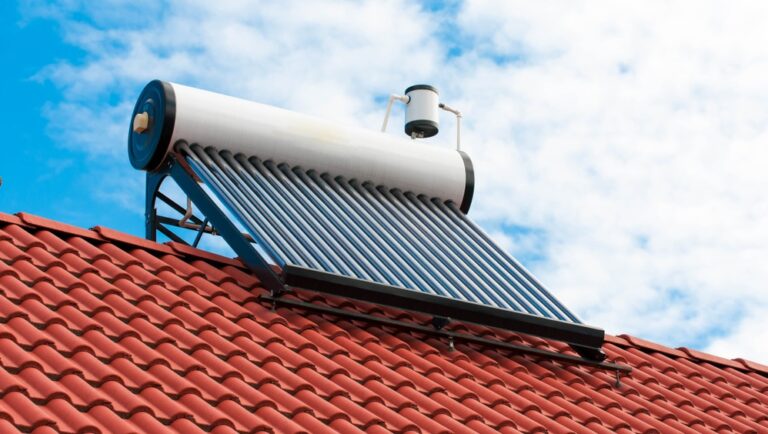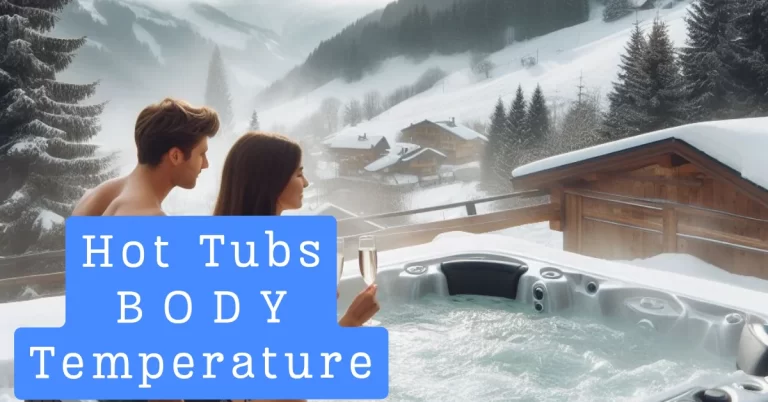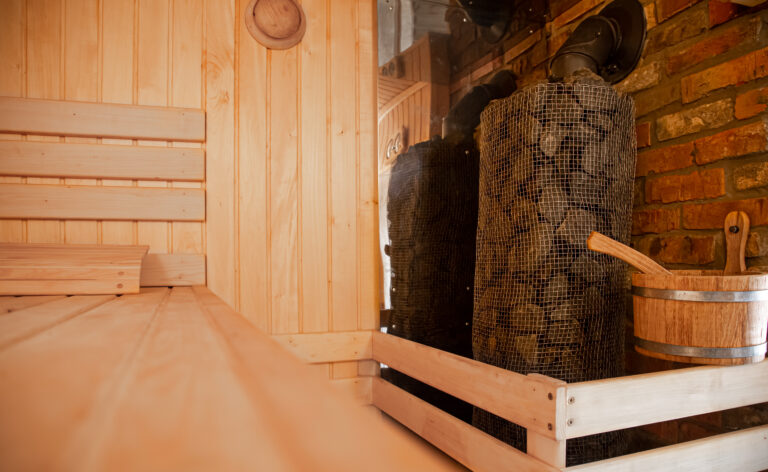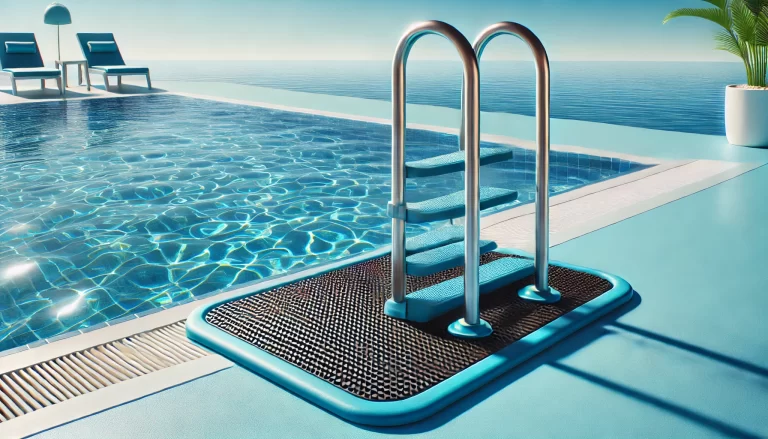Understanding Hot Tubs: A Q&A Guide
Get the right hot tub for you! This guide covers types, features, components, and all the key questions to ask before buying.
What are the main parts of a hot tub?
Hot tubs are sophisticated systems with several key components that work together to provide a relaxing and therapeutic experience. Here’s a breakdown of the main parts:
- Shell: The shell forms the main body of the hot tub and is typically made of durable materials like acrylic, fiberglass, or wood. It serves as the vessel that holds the water and provides structural integrity for more hot tub shells.
- Jets: Hot tubs feature jets strategically placed around the interior to provide hydrotherapy massage. These jets release pressurized streams of water, air, or a combination of both, targeting specific muscle groups to alleviate tension and promote relaxation.
- Pump: The pump is the heart of the hot tub and is responsible for circulating the water through the system. It draws water from the tub, passes it through the filtration system to remove debris and impurities, and then sends it back into the tub through the jets. Pumps vary in power and efficiency, with higher-end models offering adjustable speeds and programmable settings.
- Heater: The heater maintains the water temperature at the desired level for comfortable soaking. Most hot tubs have electric heaters that warm the water efficiently and reliably. Some models may offer alternative heating options, such as gas or wood-fired heaters, for greater flexibility.
- Control System: The control system serves as the command center of the hot tub, allowing users to adjust various settings for optimal comfort and convenience. It typically consists of a digital control panel located on the hot tub’s exterior, where users can set the temperature, activate jets, control lighting, and access additional features like music systems or aromatherapy.
- Plumbing: The system comprises a network of pipes and fittings connecting the hot tub’s various components. It facilitates the flow of water from the pump to the jets and back to the tub, ensuring proper circulation and distribution of heat and massage. Quality plumbing is essential for efficient operation and longevity of the hot tub.

What are the different types of hot tubs?
Hot tubs come in various types, each offering unique features and benefits to suit different preferences and lifestyles. Here are the three main categories:
- Portable/Inflatable Hot Tubs:
- Portable or inflatable hot tubs are designed for easy setup and temporary use. They are typically made of durable vinyl or PVC material and can be quickly inflated and filled with water using a standard garden hose. Portable hot tubs are often lightweight and easy to move, making them ideal for renters or those with limited outdoor space.
- Key Features:
- Quick and easy setup
- Lightweight and portable
- Affordable price point
- Suitable for smaller spaces
- Considerations:
- Limited insulation may lead to faster heat loss
- Smaller capacity compared to hard-shell models
- Typically fewer features and customization options
- Hard-Shell Hot Tubs:
- Hard-shell hot tubs, or traditional or permanent hot tubs, feature a solid construction of acrylic, fiberglass, or wood. They are designed for permanent installation and offer more outstanding durability, insulation, and customization options than portable models. Hard-shell hot tubs come in various sizes and designs to accommodate different preferences and spaces.
- Key Features:
- Durable construction for long-term use
- Superior insulation for energy efficiency
- Wide range of features and customization options
- Permanent installation for a seamless backyard integration
- Considerations:
- Higher initial cost compared to portable models
- Requires professional installation and electrical hookup
- May require periodic maintenance and repairs
- Swim Spas:
- Swim spas combine a hot tub’s relaxation with a swimming pool’s functionality. They feature a larger, elongated design with a powerful current that allows users to swim in place. Swim spas offer aquatic exercise and hydrotherapy, making them popular among fitness enthusiasts and individuals seeking a versatile wellness solution.
- Key Features:
- Dual functionality for swimming and hot tub relaxation
- Powerful current for aquatic exercise
- Adjustable temperature for year-round use
- Available in various sizes to accommodate different needs
- Considerations:
- Larger footprint compared to traditional hot tubs
- Higher initial cost and installation complexity
- Requires regular maintenance and water care
What factors should I consider when choosing a hot tub?
Selecting the right hot tub involves carefully considering several factors to ensure it meets your needs and preferences. Here’s a checklist to guide your decision-making process:
- Size & Capacity:
- Determine how many people will regularly use the hot tub. Consider the number of family members or frequent guests who will be using it simultaneously. Choose a size and capacity that comfortably accommodates everyone while allowing enough space for relaxation.
- Type:
- Decide whether you prefer a portable or permanent hot tub. Portable models offer flexibility and easy setup, making them suitable for renters or those with limited outdoor space. Permanent hot tubs, on the other hand, provide durability, insulation, and customization options for long-term enjoyment.
- Features:
- Consider the features and amenities that enhance your hot tub experience. Popular features include LED lighting, built-in sound systems, waterfalls, aromatherapy options, and advanced jet configurations. Prioritize features based on your relaxation, entertainment, and therapeutic benefits preferences.
- Brand:
- Research hot tub brands and their reputations for quality, reliability, and customer service. Explore the range of models reputable manufacturers offer and compare features, warranties, and customer reviews. Choose a brand known for innovation, durability, and customer satisfaction to ensure a positive ownership experience.
- Budget:
- Determine your budget for purchasing and maintaining a hot tub. Consider not only the upfront cost of the hot tub but also ongoing expenses such as electricity, water, chemicals, and maintenance. Balance your budget with your desired features and quality to find the best value for your investment.
- Installation & Location:
- Assess your outdoor space and consider factors such as access, terrain, and landscaping requirements for installing a hot tub. Determine whether you have adequate space for the chosen model and whether any modifications or preparations are needed before installation. Consult with a professional installer if necessary to ensure proper placement and setup.
- Energy Efficiency:
- Look for hot tub models with energy-efficient features to minimize operating costs and environmental impact. Consider factors such as insulation, pump efficiency, and heater technology when evaluating energy efficiency ratings. Choose a hot tub with high insulation values and energy-saving features to maximize comfort while minimizing utility expenses.
What Types of Hot Tub Jets Exist?
Hot tub jets are crucial in providing the soothing and therapeutic massage experience that hot tub users enjoy. Here’s a closer look at hot tub jets, including their types, impact on massage variety, and materials:
- Types of Jets:
- Directional Jets: These jets emit a focused stream of water in a specific direction, allowing users to target specific body areas. Directional jets are ideal for pinpoint massage therapy and relieving muscle tension.
- Massage Jets: Also known as pulsating or hydrotherapy jets, massage jets produce a pulsating motion that mimics the sensation of a massage therapist’s hands. These jets deliver a rhythmic massage experience that helps relax muscles and improve circulation. Check our blog, Muscle Recovery, here.
- Rotary Jets: Rotary jets create a spinning motion as water flows through them, generating a gentle massage effect across a wider area. These jets are designed to provide a broader massage coverage for overall relaxation and comfort.
- Number of Jets:
- The number of hot tub jets impacts water pressure and massage variety. A greater number of jets typically result in more intense water pressure and a wider range of massage options. Hot tubs with adjustable jets allow users to customize the massage experience by controlling the intensity and direction of the water flow. Check out Hot Tub Jets Won’t Turn Off: Causes, Solutions, and Prevention.
- Material of Jets:
- Stainless Steel Jets: Jets made of stainless steel are known for their durability and resistance to corrosion. They offer long-lasting performance and are less prone to damage from chemicals or abrasive water conditions. Stainless steel jets provide a premium look and feel to the hot tub.
- Plastic Jets: Plastic jets are more affordable and lightweight than stainless steel jets. They are commonly used in entry-level or budget-friendly hot tub models. While plastic jets may not offer the same level of durability as stainless steel, they still provide effective massage therapy and are suitable for many users. For more about hot tub jet cleaner.
What kind of features can hot tubs have?
Hot tubs today offer many features to enhance relaxation, comfort, and enjoyment. While the possibilities are expanding with advancements in technology and innovation, here are some common features found in modern hot tubs:
- Lighting:
- Built-in LED lighting systems add ambiance and visual appeal to the hot tub experience. LED lights can be programmed to change colors or patterns, creating a soothing atmosphere for nighttime soaking. Some hot tubs feature underwater lighting that illuminates the water, while others include perimeter lighting for enhanced safety and aesthetics. Check out solar floating lights.
- Sound System:
- Bluetooth-enabled sound systems allow users to enjoy their favorite music or audio content while relaxing in the hot tub. Check out waterproof Bluetooth speakers.
- Integrated speakers deliver high-quality sound without the need for external devices, creating an immersive entertainment experience.
- Hot tub sound systems are often water-resistant and strategically positioned for optimal sound quality.
- Waterfalls:
- Waterfall features add a touch of tranquility and elegance to the hot tub environment. These cascading water features create soothing sounds and visual appeal, enhancing relaxation and creating a sense of natural beauty.
- Waterfalls may vary in size and design, ranging from gentle streams to cascading falls that gently massage the shoulders and back.
- Aromatherapy:
- Dedicated aromatherapy systems allow users to infuse scents into the hot tub water, promoting relaxation and stress relief. Check here Insparation lavender aromatherapy.
- Aromatherapy can be achieved through specially formulated fragrances or essential oils dispersed into the water through a built-in system.
- Common scents include lavender, eucalyptus, and chamomile, each offering unique therapeutic benefits.
- Cover Lifter:
- A cover lifter provides mechanical assistance to make covering and uncovering the hot tub easier and more convenient. This device eliminates the need for manual lifting, reducing strain on the user and extending the life of the hot tub cover.
- Cover lifters come in various designs and configurations to accommodate different hot tub models and installation setups.
These are just a few examples of the features available in hot tubs today. Depending on the brand and model, hot tubs may also include additional amenities such as:
- Adjustable jet configurations,
- Built-in water purification systems,
- Wi-Fi connectivity,
- Ergonomic seating options.
By selecting a hot tub with the right features, users can create a personalized oasis of relaxation in their backyard.
What accessories are important for hot tubs?
In addition to the hot tub itself, several accessories are essential for maintaining water quality, ensuring safety, and enhancing the overall hot tub experience. Here we talk about important accessories every hot tub owner should consider:
- Cover:
- A durable and properly fitting cover protects your hot tub and maintains water temperature. A cover helps to conserve energy by minimizing heat loss, reduces evaporation, and prevents debris from entering the water. It also enhances safety by preventing accidental entry and acts as a barrier to keep children and pets safe. Check out the iBirdie Outdoor Waterproof Hot Tub Cover.
- Steps:
- Steps provide safe and convenient access to the hot tub, especially for individuals with mobility issues or when the hot tub is elevated. They help users safely enter and exit the hot tub, reducing the risk of slips and falls. Hot tub steps are available in various materials and designs to complement the aesthetics of the hot tub and surrounding environment.
- Chemicals:
- Proper water treatment is essential for maintaining water hygiene and preventing bacteria and algae growth.
- Include sanitizers (such as chlorine or bromine) to kill bacteria, pH balancers to regulate water acidity, and shock treatments to oxidize contaminants. Check out The best hot tub chemicals.
- It’s important to regularly test and balance the water chemistry to ensure safe and clean water for soaking.
- Water Testing Kit:
- A water testing kit allows hot tub owners to monitor and maintain proper water chemistry levels.
- These kits typically include test strips or liquid reagents to measure parameters such as pH, alkalinity, sanitizer levels, and water hardness.
- Regular testing helps to prevent water-related problems and ensures the water is safe and comfortable for soaking.
Additional accessories that can enhance the hot tub experience include:
- Hot Tub Cover Lifters: Assist in easily removing and replacing the hot tub cover.
- Spa Vacuum or Skimmer: Helps to remove debris and contaminants from the water surface and bottom.
- Hot Tub Umbrella: Provides shade and protection from the elements during outdoor soaking.
- Hot Tub Pillows: Adds comfort and support while lounging in the hot tub.
- Floating Drink Holder: Keeps beverages within easy reach while you relax.
- Waterproof Bluetooth Speaker: Sets the mood with your favorite music while soaking.
- Aromatherapy: Add essential oils or spa fragrances for a relaxing and sensory experience.
- LED Lighting: Creates ambiance and enhances evening soaks.
[wps_alert type=”primary”]Important Note: Always refer to your hot tub’s owner’s manual for specific recommendations on compatible accessories and their safe usage.[/wps_alert]
By investing in these essential accessories and incorporating them into your hot tub maintenance routine, you can prolong the lifespan of your hot tub, ensure water safety, and enjoy a more comfortable and relaxing soaking experience.
What about Temperatures in Your Hot Tub
Temperature management is critical to maximizing comfort and therapeutic benefits in your hot tub. Whether you’re seeking relaxation or relief from muscle tension, understanding and controlling temperatures effectively is key to enhancing your soaking experience. Check out the Best Hot Tub Temperature.
Water Temperature: This refers to the warmth of the water in your hot tub and can be adjusted to suit individual preferences and desired therapeutic effects. Whether you prefer a soothing soak or invigorating hydrotherapy, setting the water temperature to the right level is essential for optimal comfort.
Air Temperature: The ambient temperature surrounding your hot tub greatly influences the overall enjoyment of your soaking experience. Monitoring and maintaining a comfortable air temperature ensures you can fully relax and unwind without feeling too hot or cold.
Set Temperature: This is the target temperature you set for your hot tub water, which the heater works to maintain. By specifying your desired temperature, you can ensure consistent warmth and comfort throughout your soak, enhancing the therapeutic benefits of your hot tub sessions.
How Can You Effectively Manage Temperatures in Your Hot Tub?
To ensure an optimal hot tub experience, managing temperatures effectively is crucial. Here’s how you can achieve that:
Water Temperature:
- Adjust the water temperature according to your preferences and desired therapeutic effects.
- Utilize temperature settings typically measured in degrees Fahrenheit (°F) or degrees Celsius (°C).
- For instance, setting your hot tub’s water temperature to a relaxing 102°F can provide warmth and relaxation for users.
Air Temperature:
- Consider the ambient temperature surrounding the hot tub, as it significantly impacts comfort and enjoyment.
- Monitor air temperature in degrees Fahrenheit (°F) or Celsius (°C).
- For example, maintaining an air temperature of 75°F ensures a comfortable and pleasant environment for soaking.
Set Temperature:
- Set the target temperature for the hot tub water to optimize your soaking sessions.
- Specify numeric values representing your desired temperature.
- For instance, setting the temperature to 104°F allows users to enjoy optimal comfort and therapeutic benefits during their soak.
Understanding and effectively managing these temperature-related factors allows you to create a truly enjoyable and relaxing hot tub experience tailored to your preferences. See how Hot Tubs and Body Temperature and What You Need to Know.
End Note:
Thank you for exploring our comprehensive guide to hot tubs! We hope this Q&A has provided valuable insights into fully understanding, maintaining, and enjoying your hot tub.
For more details, product insights, and expert advice, visit Hot Tub Patio at hottubpatio.com. Your ultimate source for relaxation and outdoor living insights, Hot Tub Patio is here to help you create your oasis of tranquility.
Experience the luxury of a hot tub living with us. Explore our range of premium hot tubs and accessories today!
Relaxation and Wellness. Discover Your Oasis of Tranquility with Hot Tub Patio.













2 Comments